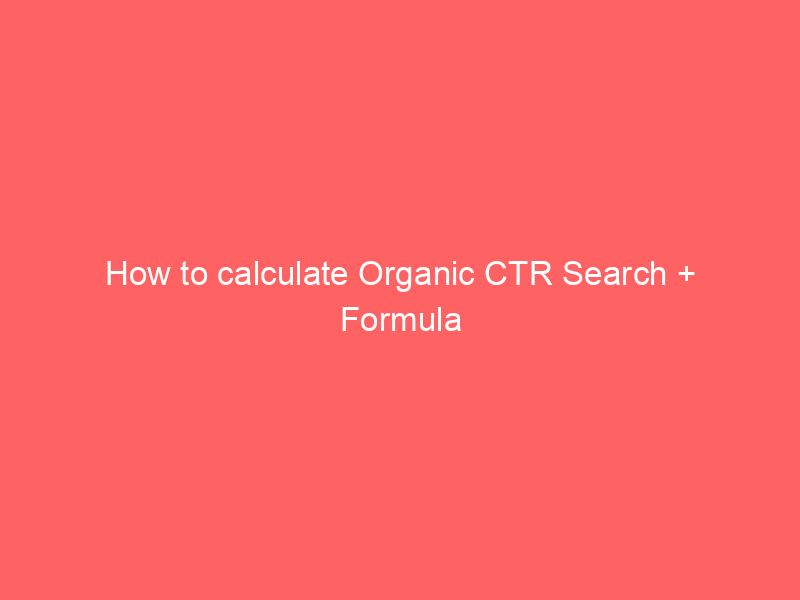Imagine you have a website or a blog, and you want more people to visit and engage with your content. One essential aspect of achieving this goal is understanding your Organic Click-Through Rate (CTR) in search results. This metric helps you measure how many people are clicking on your website’s link when it appears in search engine results. Calculating your Organic CTR can provide valuable insights into the effectiveness of your SEO efforts and help you optimize your content for better visibility.
Understanding the Core Concept
Organic CTR is the percentage of clicks your website receives compared to the number of times it is shown in search results. It indicates how compelling your search result snippet is to users and how well it resonates with their search intent. A higher Organic CTR suggests that your content is relevant and enticing to searchers, while a lower CTR may indicate the need for optimization.
Formula
Real-World Example
Let’s say your website received 500 clicks and had 10,000 impressions in a given period. To calculate your Organic CTR, you would divide the number of clicks (500) by the number of impressions (10,000), giving you a CTR of 5%. This means that 5% of the people who saw your website in search results clicked on it.
“Understanding your Organic CTR is crucial for optimizing your SEO strategy and improving your website’s visibility in search results.” – SEO Expert
Real-World Applications
By calculating your Organic CTR, you can identify which keywords, meta descriptions, and title tags are performing well and which ones need improvement. This data can help you tailor your content to better meet the needs of your target audience and attract more organic traffic to your website.
Actionable Steps
- Regularly monitor your Organic CTR using tools like Google Search Console
- Experiment with different meta descriptions and titles to see which ones drive higher CTRs
- Analyze the performance of your top-ranking pages and identify opportunities for optimization
Key Takeaways
- Organic CTR measures the effectiveness of your website’s search result snippet
- A higher CTR indicates better visibility and relevance to searchers
- Regularly monitoring and optimizing your Organic CTR can lead to increased organic traffic
Related Terms
- Impressions
- Clicks
- Meta Description
Common Mistakes to Avoid
- Ignoring Organic CTR and focusing solely on keyword rankings
- Using generic meta descriptions that don’t entice users to click
- Not analyzing the performance of low-CTR pages and making necessary changes
Common Myths Debunked
- Myth: A high CTR always results in higher rankings
- Myth: Organic CTR is not important for SEO
- Myth: Impressions are more valuable than clicks
5+ FAQs
How often should I monitor my Organic CTR?
It’s recommended to monitor your Organic CTR regularly, at least once a month, to track changes and identify trends.
Can I improve my Organic CTR without changing my content?
Yes, optimizing your meta descriptions, titles, and URL structures can positively impact your CTR without altering your content.
Why is Organic CTR important for SEO?
Organic CTR is a critical metric that indicates how well your website resonates with users and contributes to your overall search engine visibility.
What is a good Organic CTR benchmark?
Average Organic CTRs vary by industry, but a benchmark of 5-10% is considered healthy for most websites.
How can I use Organic CTR data to improve my content strategy?
By analyzing your Organic CTR data, you can identify popular keywords and topics that resonate with your audience, helping you create more targeted and engaging content.
Do you want to boost your website’s visibility and attract more organic traffic? Contact us today, and we’ll show you how to optimize your Organic CTR for better results. Reach out via the contact information provided on our website.


Leave a Reply